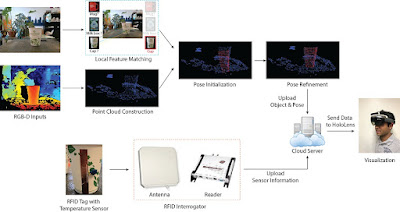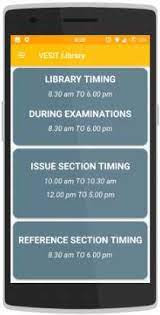|
About Topic In Short: |
|
|
|
Who: Institute Name: Carnegie Mellon University. Authors: Chris McComb and Glen
Williams |
|
What: Design
for Artificial Intelligence (DfAI) Framework for integrating AI into
engineering design from the beginning, enabling breakthrough improvements in
technology development. |
|
|
How: The
DfAI framework comprises three key components - DfAI Personnel, DfAI
Applications, and DfAI Framework, addressing AI literacy, engineering system
redesign, and enhancing AI development in engineering. |
|
Introduction:
This
insightful piece delves into the revolutionary "Design for Artificial
Intelligence" (DfAI) framework, a collaborative masterpiece crafted by
ingenious minds at Carnegie Mellon University and Penn State University. It
delves into the complexities involved in seamlessly integrating AI into
engineering design, underscoring the indispensable role that engineers must
play in grasping the specialized domain of DfAI.
The
Genesis of the DfAI Framework:
The
genesis of the DfAI framework can be traced back to an epiphany that struck the
researchers amidst the ever-evolving landscape of engineering design and
manufacturing. They confronted the undeniable truth that there was a dearth of
engineers equipped with expertise in both engineering system design and
artificial intelligence. Thus, recognizing the immense possibilities that AI
held for engineering design, they embraced the challenge of creating a
distinctive discipline to unlock unprecedented advancements.
The
Visionaries: Chris McComb and Glen Williams:
The
pioneers at the helm of the DfAI framework's inception were none other than the
illustrious Chris McComb and the trailblazer Glen Williams. As an associate
professor of mechanical engineering, Chris McComb ardently emphasized the
imperative of entwining AI into the very fabric of the engineering design
process, rather than viewing it as a mere appendage to existing systems.
Glen
Williams, a former protégé of McComb and now the principal scientist at
Re:Build Manufacturing, eloquently exemplified the framework's significance
through a hypothetical scenario of two companies engaged in mass-producing
electric aircraft. While Company A opted for the traditional manual approach to
hasten market entry and profitability, Company B embarked on a data-rich
journey, capturing intelligence throughout the design's lifecycle. With time,
Company B's data-driven paradigm resulted in monumental cost reductions and an
unparalleled competitive edge over Company A.
The
Pillars of the DfAI Framework:
At the
core of the DfAI framework stand three pillars that are critical to its
success: engineering designers, design repository curators, and AI developers.
These roles are intertwined and synergistic, with engineering designers acting
as adept problem solvers, proficient in both engineering constraints and AI
algorithms. Design repository curators take on the mantle of database maintainers,
armed with extensive engineering design and manufacturing acumen, providing
design engineers with invaluable data management tools that cater to both
current and future demands. In parallel, AI developers thrive as visionaries,
envisioning, creating, marketing, and incessantly refining AI software products
that empower design engineers to soar to unprecedented heights.
The
Boundless Applications of DfAI:
The DfAI
framework transcends the confines of any particular engineering discipline,
resonating across the vast expanse of the engineering design process. It
unfurls a path to progress, with its compass pointing toward three cardinal
directions: elevating AI literacy in the industry, reimagining engineering
systems to seamlessly accommodate AI integration, and fostering the evolution
of the engineering AI development process.
Thus
Speak Authors/Experts:
Chris
McComb passionately advocates for AI integration at the very core of design
engineers' operations, negating any notion of AI being an afterthought. He
firmly believes that the future of design and manufacturing rests upon
empowering engineers with cutting-edge AI-integrated software.
Glen
Williams underscores the significance of laying the foundation through
comprehensive frameworks, unified terminology, and well-documented principles.
Such endeavors foster an interconnected community of AI engineers hailing from
diverse engineering applications, industries, technologies, and scales of
operation, poised to collaborate in unparalleled ways.
Conclusion:
The DfAI
framework signifies an epoch-making milestone in engineering design and AI
integration. A testament to collaborative research and visionary insight, it
paves the way for illuminating discussions on the future of AI in engineering.
With the adoption of DfAI principles, industries stand to unlock transformative
advancements, giving birth to a new era of innovative, sustainable, and
immensely profitable technology.
Image
Gallery
|
|
DfAI Principles (Credit: Carnegie Mellon Unviersity, College of Engineering) |
|
|
|
All Images Credit: from References/Resources
sites [Internet] |
Chris McComb presents this work via the ASME Journal of Computing & Information Science in Engineering in the following video.
Hashtag/Keyword/Labels list:
#DfAI #ArtificialIntelligenceEngineering
#EngineeringDesign #AIIntegration #BreakthroughImprovements
#CarnegieMellonUniversity #PennStateUniversity #ChrisMcComb #GlenWilliams
#DataDrivenDesign #AIEngineers #InterconnectedCommunity #AdditiveManufacturing
#Aerospace #MedicalDevices #IoT #SmartDevices
References/Resources:
1. https://engineering.cmu.edu/news-events/news/2022/12/22-dfai.html
2. https://www.pressreader.com/india/electronics-for-you-express/20230203/282742000948776
3. ASME Journal of
Computing and Information Science in Engineering
For more such blog posts visit Index page or click InnovationBuzz label.
…till next
post, bye-bye and take-care.


















